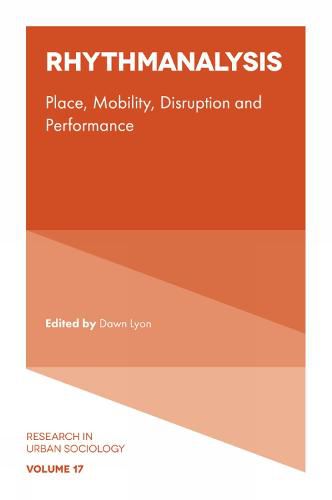Readings Newsletter
Become a Readings Member to make your shopping experience even easier.
Sign in or sign up for free!
You’re not far away from qualifying for FREE standard shipping within Australia
You’ve qualified for FREE standard shipping within Australia
The cart is loading…






This collection brings together new and original research on the concept and practice of ‘rhythmanalysis’ in urban sociology as a means to analyse the relationship between the time and space of the city.
Originally proposed by French philosopher and urban scholar, Henri Lefebvre and his collaborator, Catherine Regulier, in the twentieth century, ‘rhythmanalysis’ continues to capture the attention of urban scholars today. Including in-depth analyses of the rhythms of place-making, this volume takes us from the City of London to the Caminito of Buenos Aires. Exploring the production of rhythm on the move - in cars and on the street - in relation to urban atmospheres and the implications of mobility for climate emergency, the chapters consider what happens when everyday urban rhythms are disrupted and reconfigured.
Delving into the mobilisation of the body, materials and technologies to make and detect rhythm, this collection sparks new interest in using rhythmanalysis as a mode of sensing and making sense of the complex entanglements of time and space at the heart of everyday urban life. It is an appealing read for scholars and students in urban sociology, social and cultural geography, mobilities studies, and the sociology and philosophy of time.
$9.00 standard shipping within Australia
FREE standard shipping within Australia for orders over $100.00
Express & International shipping calculated at checkout
This collection brings together new and original research on the concept and practice of ‘rhythmanalysis’ in urban sociology as a means to analyse the relationship between the time and space of the city.
Originally proposed by French philosopher and urban scholar, Henri Lefebvre and his collaborator, Catherine Regulier, in the twentieth century, ‘rhythmanalysis’ continues to capture the attention of urban scholars today. Including in-depth analyses of the rhythms of place-making, this volume takes us from the City of London to the Caminito of Buenos Aires. Exploring the production of rhythm on the move - in cars and on the street - in relation to urban atmospheres and the implications of mobility for climate emergency, the chapters consider what happens when everyday urban rhythms are disrupted and reconfigured.
Delving into the mobilisation of the body, materials and technologies to make and detect rhythm, this collection sparks new interest in using rhythmanalysis as a mode of sensing and making sense of the complex entanglements of time and space at the heart of everyday urban life. It is an appealing read for scholars and students in urban sociology, social and cultural geography, mobilities studies, and the sociology and philosophy of time.